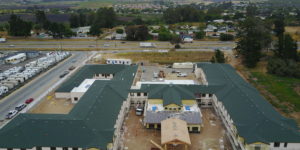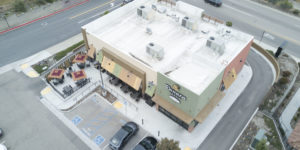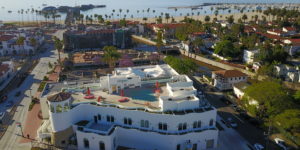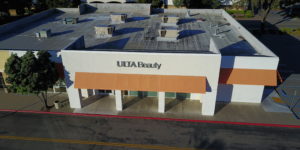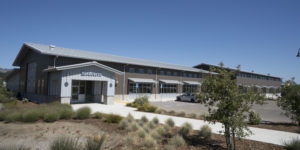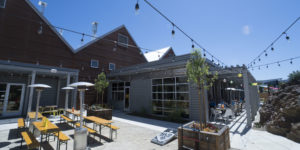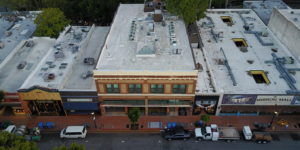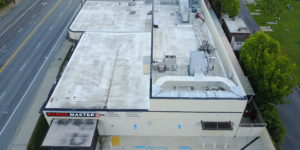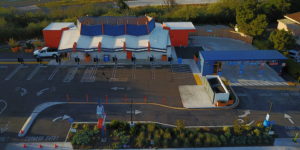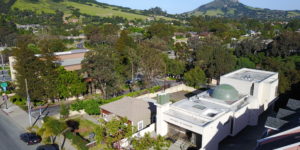Our Services
24 Hour Monitoring | Burglar Alarms | Fire Alarms | Design & Engineering | Fire Extinguishers | Fire Sprinklers | Customer Service | Testing & Inspection
24 Hour Monitoring
Our UL listed central station, American Two-Way provides 24-hour monitoring. Their sole responsibility is to notify the police, fire department, or customer specified persons in the event of an alarm activation. Alpha Fire Unlimited can receive alarm signals from standard phone lines, as well as cellular alarm dialers and through VoIP. Their ability to interpret Contact ID allows the operators to provide emergency services with greater information about your system. If you need to talk with our central station, either in the event of a false alarm or to test your system, you will always be answered by a live person.
Alpha Fire Unlimited can access account information over a secure internet connection to view alarm events and account information. We can also check the status of your panel and assure proper functioning – without a service call.
Burglar Alarms
Intrusion detection systems, commonly referred to as Burglar Alarms, are designed to detect unwanted entry into specific areas or throughout a protected premises. Alpha Fire Unlimited installs systems consisting of multiple layers of perimeter intrusion detection consisting of magnetic door and window contacts and interior areas of coverage via motion sensors, glass break detectors and more. Our high end commercial security alarms can also include panic or duress buttons to summon other building occupants or the police.
Alarm panel monitoring signals can travel via IP network or a cellular dialer providing almost immediate connection to our UL listed Central Station.
Installation of these systems in California requires an Alarm Company Operator license and that each Alarm Company employee passes both FBI and Department of Justice background investigations. As an Alarm Company Operator, Alpha Fire Unlimited meets these requirements as mandated by the California Department of Consumer Affairs, Bureau of Security and Investigative Services (DCA BSIS).
Contact us today to secure your premise.
Fire Alarms
A fire alarm system is number of devices working together to detect and warn people through visual and audio appliances when smoke, fire, carbon monoxide or other emergencies are present. These alarms may be activated from smoke detectors, and heat detectors. Alarms can be either motorised bells or wall mountable sounders or horns. They can also be speaker strobes which sound an alarm, followed by a voice evacuation message which usually state in the lines of “Attention, Attention. A fire emergency has been reported. Please leave the building via the nearest exit. DO NOT use elevators!” They may also be activated via Manual fire alarm activation devices such as manual call points or pull stations. Fire alarm sounders can be set to certain frequencies and different tones including low, medium and high depending on the country and manufacturer of the device. Most fire alarm systems in Europe sound like a siren with alternating frequencies. Fire alarm sounders in the United States can be either continuous or set to different codes such as Code 3.
Design & Engineering
Design:
After the fire protection goals are established – usually by referencing the minimum levels of protection mandated by the appropriate model building code, insurance agencies, and other authorities – the fire alarm designer undertakes to detail specific components, arrangements, and interfaces necessary to accomplish these goals. Equipment specifically manufactured for these purposes is selected and standardized installation methods are anticipated during the design. In the United States, NFPA 72, The National Fire Alarm Code is an established and widely used installation standard.
Parts of a Fire Alarm:
Fire alarm control panel (FACP) AKA fire alarm control unit (FACU); This component, the hub of the system, monitors inputs and system integrity, controls outputs and relays information.
Primary power supply: Commonly the non-switched 120 or 240 volt alternating current source supplied from a commercial power utility. In non-residential applications, a branch circuit is dedicated to the fire alarm system and its constituents. “Dedicated branch circuits” should not be confused with “Individual branch circuits” which supply energy to a single appliance.
Secondary (backup) power supplies: This component, commonly consisting of sealed lead-acid storage batteries or other emergency sources including generators, is used to supply energy in the event of a primary power failure.
Initiating devices: This component acts as an input to the fire alarm control unit and are either manually or automatically activated. Examples would be devices pull stations, heat detectors, or smoke detectors. Heat and smoke detectors have different categories of both kinds. Some categories are beam, photoelectrical, aspiration, and duct.
Notification appliances: This component uses energy supplied from the fire alarm system or other stored energy source, to inform the proximate persons of the need to take action, usually to evacuate. This is done by means of a flashing light, strobe light, electromechanical horn, “beeper horn”, chime, bell, speaker, or a combination of these devices. The System Sensor Spectralert Advance Horn makes a beeping sound and electromechanical sound together. Strobes are either made of a xenon tube (most common), or now LED lights.
Building safety interfaces: This interface allows the fire alarm system to control aspects of the built environment and to prepare the building for fire, and to control the spread of smoke fumes and fire by influencing air movement, lighting, process control, human transport and exit.
Alarm Initiating Devices:
Devices for manual fire alarm activation, are installed to be readily located (near the exits), identified, and operated.
Automatically actuated devices can take many forms intended to respond to any number of detectable physical changes associated with fire: convected thermal energy; heat detector, products of combustion; smoke detector, radiant energy; flame detector, combustion gasses; fire gas detector, and release of extinguishing agents; water-flow detector. The newest innovations can use cameras and computer algorithms to analyze the visible effects of fire and movement in applications inappropriate for or hostile to other detection methods.
Fire Alarm Notification Appliances:
Notification Appliances utilize audible, visible, tactile, textual to alert the occupants of the need to evacuate or take action in the event of fire or other emergency. Evacuation signals may consist of simple appliances that transmit uncoded information, coded appliances that transmit a predetermined pattern, and or appliances that transmit audible and visible textual information such as live or pre-recorded instructions, and illuminated message displays.
In the United States, fire alarm evacuation signals generally consist of a standardized audible tone, with visual notification in all public and common use areas. Emergency signals are intended to be distinct and understandable to avoid confusion with other signals.
Temporal Code 3 is the most common audible in a modern system. It chimes three times at one-second intervals, stops for one second, then repeats. Voice Evacuation is the second most common audible in a modern system. Continuous is not common in a new building or old building with modern system, but is found in lots of schools and older buildings. Other methods include:
Audible textual appliances, which are employed as part of a Fire Alarm system that includes Emergency Voice Alarm Communications (EVAC) capabilities. High reliability speakers are used to notify the occupants of the need for action in connection with a fire or other emergency. These speakers are employed in large facilities where general undirected evacuation is considered impracticable or undesirable. The signals from the speakers are used to direct the occupant’s response. The system may be controlled from one or more locations within the building known as Fire Wardens Stations, or from a single location designated as the building Fire Command Center. Speakers are automatically actuated by the fire alarm system in a fire event, and following a pre-alert tone, selected groups of speakers may transmit one or more prerecorded messages directing the occupants to safety. These messages may be repeated in one or more languages. Trained personnel activating and speaking into a dedicated microphone can suppress the replay of automated messages in order to initiate or relay real time voice instructions.
Emergency Voice Alarm Communication Devices:
Some fire alarm systems utilize emergency voice alarm communication systems to provide pre-recorded and manual voice messages. Voice Alarm systems are typically used in high-rise buildings, arenas and other large “defend-in-place” occupancies such as Hospitals and Detention facilities where total evacuation is difficult to achieve. Voice-based systems provide response personnel with the ability to conduct orderly evacuation and notify building occupants of changing event circumstances.
Mass Notification Systems:
New codes and standards introduced around 2010 especially the new UL Standard 2572, the U.S. Department of Defense’s UFC 4-021-01 Design and O&M Mass Notification Systems, and NFPA 72 2010 edition Chapter 24 have led Fire Alarm System Manufacturers to expand their systems voice evacuation capabilities to support new requirements for mass notification including support for multiple types of emergency messaging (i.e. inclement weather emergency, security alerts, amber alerts). The major requirements of a mass notification system are to provided prioritized messaging according to the local facilities emergency response plan. The emergency response team must define the priority of potential emergency events at site and the fire alarm system must be able to support the promotion and demotion of notifications based on this emergency response plan. Emergency Communication System’s also have requirements for visible notification in coordination with any audible notification activities to meet requirements of the Americans with Disabilities Act. Recently many manufacturer’s have made efforts to certify their equipment to meet these new and emerging standards. Mass Notification System Categories include the following:
Mass notification systems often extend the notification appliances of a standard fire alarm system to include PC based workstations, text based digital signage, and a variety of remote notification options including email, text message, rss feed, or IVR based telephone text-to-speech messaging
Fire Alarm Control Panel:
A Fire Alarm Control Panel (FACP), or Fire Alarm Control Unit (FACU), is the controlling component of a Fire Alarm System. The panel receives information from environmental sensors designed to detect changes associated with fire, monitors their operational integrity and provides for automatic control of equipment, and transmission of information necessary to prepare the facility for fire based on a predetermined sequence. The panel may also supply electrical energy to operate any associated sensor, control, transmitter, or relay. There are four basic types of panels: coded panels, conventional panels, addressable panels, and multiplex systems
Fire Extinguishers
A fire extinguisher, or extinguisher, is an active fire protection device used to extinguish or control small fires, often in emergency situations. It is not intended for use on an out-of-control fire, such as one which has reached the ceiling, endangers the user (i.e., no escape route, smoke, explosion hazard, etc.), or otherwise requires the expertise of a fire department. Typically, a fire extinguisher consists of a hand-held cylindrical pressure vessel containing an agent which can be discharged to extinguish a fire.
In the United States, fire extinguishers in all buildings other than houses are generally required to be serviced and inspected by a fire protection service company at least annually. Some jurisdictions require more frequent service for fire extinguishers. The servicer places a tag on the extinguisher to indicate the type of service performed (annual inspection, recharge, new fire extinguisher).
There are two main types of fire extinguishers: stored-pressure and cartridge-operated. In stored pressure units, the expellant is stored in the same chamber as the firefighting agent itself. Depending on the agent used, different propellants are used. With dry chemical extinguishers, nitrogen is typically used; water and foam extinguishers typically use air. Stored pressure fire extinguishers are the most common type. Cartridge-operated extinguishers contain the expellant gas in a separate cartridge that is punctured prior to discharge, exposing the propellant to the extinguishing agent. This type is not as common, used primarily in areas such as industrial facilities, where they receive higher-than-average use. They have the advantage of simple and prompt recharge, allowing an operator to discharge the extinguisher, recharge it, and return to the fire in a reasonable amount of time. Unlike stored pressure types, these extinguishers use compressed carbon dioxide instead of nitrogen, although nitrogen cartridges are used on low temperature (-60 rated) models. Cartridge operated extinguishers are available in dry chemical and dry powder types in the U.S. and in water, wetting agent, foam, dry chemical (classes ABC and B.C.), and dry powder (class D) types in the rest of the world.
Fire extinguishers are further divided into handheld and cart-mounted (also called wheeled extinguishers). Handheld extinguishers weigh from 0.5 to 14 kilograms (1.1 to 30.9 lb), and are hence, easily portable by hand. Cart-mounted units typically weigh more than 23 kilograms (51 lb). These wheeled models are most commonly found at construction sites, airport runways, heliports, as well as docks and marinas.
Dry Chemical Extinguisher:
This is a powder based agent that extinguishes by separating the four parts of the fire tetrahedron. It prevents the chemical reactions involving heat, fuel, and oxygen and halts the production of fire sustaining “free-radicals”, thus extinguishing the fire.
Monoammonium phosphate, also known as tri-class, multipurpose, or ABC dry chemical, used on class A, B, and C fires. It receives its class A rating from the agent’s ability to melt and flow at 177 °C (351 °F) to smother the fire. More corrosive than other dry chemical agents. Pale yellow in color.
Sodium bicarbonate, regular or ordinary used on class B and C fires, was the first of the dry chemical agents developed. In the heat of a fire, it releases a cloud of carbon dioxide that smothers the fire. That is, the gas drives oxygen away from the fire, thus stopping the chemical reaction. This agent is not generally effective on class A fires because the agent is expended and the cloud of gas dissipates quickly, and if the fuel is still sufficiently hot, the fire starts up again. While liquid and gas fires do not usually store much heat in their fuel source, solid fires do. Sodium bicarbonate was very common in commercial kitchens before the advent of wet chemical agents, but now is falling out of favor, as it is much less effective than wet chemical agents for class K fires, less effective than Purple-K for class B fires, and is ineffective on class A fires. White or blue in color.
Potassium bicarbonate (principal constituent of Purple-K), used on class B and C fires. About two times as effective on class B fires as sodium bicarbonate, it is the preferred dry chemical agent of the oil and gas industry. The only dry chemical agent certified for use in ARFF by the NFPA. Colored violet to distinguish it.
Potassium bicarbonate & Urea Complex (AKA Monnex), used on class B and C fires. More effective than all other powders due to its ability to decrepitate (where the powder breaks up into smaller particles) in the flame zone creating a larger surface area for free radical inhibition. Grey in color.
Potassium chloride, or Super-K, dry chemical was developed in an effort to create a high efficiency, protein-foam compatible dry chemical. Developed in the 60s, prior to Purple-K, it was never as popular as other agents since, being a salt, it was quite corrosive. For B and C fires, white in color.
Foam-compatible, which is a sodium bicarbonate (BC) based dry chemical, was developed for use with protein foams for fighting class B fires. Most dry chemicals contain metal stearates to waterproof them, but these will tend to destroy the foam blanket created by protein (animal) based foams. Foam compatible type uses silicone as a waterproofing agent, which does not harm foam. Effectiveness is identical to regular dry chemical, and it is light green in color (some ANSUL brand formulations are blue). This agent is generally no longer used since most modern dry chemicals are considered compatible with synthetic foams such as AFFF.
MET-L-KYL / PYROKYL is a specialty variation of sodium bicarbonate for fighting pyrophoric (ignites on contact with air) liquid fires. In addition to sodium bicarbonate, it also contains silica gel particles. The sodium bicarbonate interrupts the chain reaction of the fuel and the silica soaks up any unburned fuel, preventing contact with air. It is effective on other class B fuels as well. Blue/red in color.
Foams:
Applied to fuel fires as either an aspirated (mixed and expanded with air in a branch pipe) or nonaspirated form to form a frothy blanket or seal over the fuel, preventing oxygen reaching it. Unlike powder, foam can be used to progressively extinguish fires without flashback.
Aqueous film-forming foam (AFFF), used on A and B fires and for vapor suppression. The most common type in portable foam extinguishers. It contains fluoro-tensides[15] which can be accumulated in the human body. The long-term effects of this on the human body and environment are unclear at this time.
Alcohol-resistant aqueous film-forming foams (AR-AFFF), used on fuel fires containing alcohol. Forms a membrane between the fuel and the foam preventing the alcohol from breaking down the foam blanket.
Film-forming fluoroprotein (FFFP) contains naturally occurring proteins from animal by-products and synthetic film-forming agents to create a foam blanket that is more heat resistant than the strictly synthetic AFFF foams. FFFP works well on alcohol-based liquids and is used widely in motorsports.
Compressed air foam system (CAFS): Any APW style extinguisher that is charged with a foam solution and pressurized with compressed air. Generally used to extend a water supply in wildland operations. Used on class A fires and with very dry foam on class B for vapor suppression.
Arctic Fire is a liquid fire extinguishing agent that emulsifies and cools heated materials more quickly than water or ordinary foam. It is used extensively in the steel industry. Effective on classes A, B, and D.
FireAde, a foaming agent that emulsifies burning liquids and renders them non-flammable. It is able to cool heated material and surfaces similar to CAFS. Used on A and B (said to be effective on some class D hazards, although not recommended due to the fact that fireade still contains amounts of water which will react with some metal fires).
Cold Fire, is an organic, eco-friendly wetting agent that works to take the heat out of fire by breaking down heat hydrocarbons. Bulk Cold Fire is used in booster tanks and is acceptable for use in CAFS systems. Cold Fire is UL listed and is effective against class A,B,D and K fires. Aerosol versions are preferred by users for cars, boats, RVs, and kitchens. Used primarily by law enforcement, fire departments, EMS, and the racing industry across North America
Water:
Cools burning material. Very effective against fires in furniture, fabrics, etc. (including deep seated fires), but can be safely used only in the absence of electricity.
Air-pressurized water (APW) cools burning material by absorbing heat from burning material. Effective on class A fires, it has the advantage of being inexpensive, harmless, and relatively easy to clean up. In the United States, APW units contain 2.5 US gal (9.5 l) of water in a tall, stainless steel cylinder. In Europe, they are typically mild steel, lined with polyethylene, painted red, containing 6–9 l (1.6–2.4 US gal) of water.
Water mist (WM) uses a fine misting nozzle to break up a stream of deionized water to the point of not conducting electricity back to the operator. Class A and C rated. It is used widely in hospitals for the reason that, unlike other clean-agent suppressants, it is harmless and non-contaminant. These extinguishers come in Template:Vonert units, painted white in the United States and red in Europe.
Fire Extinguisher Maintenance:
Most countries in the world require regular fire extinguisher maintenance by a competent person to operate safely and effectively, as part of fire safety legislation. Lack of maintenance can lead to an extinguisher not discharging when required, or rupturing when pressurized. Deaths have occurred, even in recent times, from corroded extinguishers exploding.
There is no all-encompassing fire code in the United States. Generally, most municipalities (by adoption of the International Fire Code) require inspections every 30 days to ensure the unit is pressurized and unobstructed (done by an employee of the facility) and an annual inspection by a qualified technician. Hydrostatic pressure testing for all types of extinguishers is also required, generally every five years for water and CO2 models up to every 12 years for dry chemical models.
Recently the National Fire Protection Association and ICC voted to allow for the elimination of the 30-day inspection requirement so long as the fire extinguisher is monitored electronically. According to NFPA, the system must provide record keeping in the form of an electronic event log at the control panel. The system must also constantly monitor an extinguisher’s physical presence, internal pressure and whether an obstruction exists that could prevent ready access. In the event that any of the above conditions are found, the system must send an alert to officials so they can immediately rectify the situation. Electronic monitoring can be wired or wireless.
Maintenance inspection: All types of extinguishers should be inspected at least once a year. The extinguisher is checked that it has the correct volume and pressure of extinguishing agent, that it is within the required hydrotest and internal maintenance intervals, that it is in good condition, and that all external parts are still serviceable. Dry chemical and dry powder types may also be hit on the bottom with a rubber mallet to make sure the powder is free-flowing. After inspection, the tech will attach a new tamper seal and yearly service tag around the pin.
Internal maintenance:
Water – annually (some states) or 5 years (NFPA 10, 2010 edition)
Foam – every 3 years
Wet chemical, and CO2 – every 5 years
Dry chemical and dry powder- every 6 years
Halon and clean agents – every 6 years
Cartridge-operated dry chemical or dry powder – annually
Stored-pressure dry chemical mounted on vehicles – annually
Fire Sprinklers
Fire Sprinkler System:
A fire sprinkler system is an active fire protection method, consisting of a water supply system, providing adequate pressure and flowrate to a water distribution piping system, onto which fire sprinklers are connected. Although historically only used in factories and large commercial buildings, systems for homes and small buildings are now available at a cost-effective price. Fire sprinkler systems are extensively used worldwide, with over 40 million sprinkler heads fitted each year. In buildings completely protected by fire sprinkler systems, over 96% of fires were controlled by fire sprinklers alone.
Wet Pipe System:
By a wide margin, wet pipe sprinkler systems are installed more often than all other types of fire sprinkler systems. They also are the most reliable, because they are simple, with the only operating components being the automatic sprinklers and (commonly, but not always) the automatic alarm check valve. An automatic water supply provides water under pressure to the system piping.
Dry Pipe System:
Dry pipe systems are the second most common sprinkler system type. Dry pipe systems are installed in spaces in which the ambient temperature may be cold enough to freeze the water in a wet pipe system, rendering the system inoperable. Dry pipe systems are most often used in unheated buildings, in parking garages, in outside canopies attached to heated buildings (in which a wet pipe system would be provided), or in refrigerated coolers. In regions using NFPA regulations, wet pipe systems cannot be installed unless the range of ambient temperatures remains above 40 °F (4 °C).
Water is not present in the piping until the system operates; instead, the piping is filled with air at a pressure below the water supply pressure. To prevent the larger water supply pressure from prematurely forcing water into the piping, the design of the dry pipe valve (a specialized type of check valve) results in a greater force on top of the check valve clapper by the use of a larger valve clapper area exposed to the piping air pressure, as compared to the higher water pressure but smaller clapper surface area.
When one or more of the automatic sprinkler heads is triggered, it opens allowing the air in the piping to vent from that sprinkler. Each sprinkler operates independently, as its temperature rises above its triggering threshold. As the air pressure in the piping drops, the pressure differential across the dry pipe valve changes, allowing water to enter the piping system. Water flow from sprinklers, needed to control the fire, is delayed until the air is vented from the sprinklers. In regions using NFPA 13 regulations, the time it takes water to reach the hydraulically remote sprinkler from the time that sprinkler is activated is limited to a maximum of 60 seconds. In industry practice, this is known as the “Maximum Time of Water Delivery”. The maximum time of water delivery may be required to be reduced, depending on the hazard classification of the area protected by the sprinkler system.
Deluge System:
“Deluge” systems are systems in which all sprinklers connected to the water piping system are open, in that the heat sensing operating element is removed, or specifically designed as such. These systems are used for special hazards where rapid fire spread is a concern, as they provide a simultaneous application of water over the entire hazard. They are sometimes installed in personnel egress paths or building openings to slow travel of fire (e.g. openings in a fire-rated wall).
Pre-Action Systems:
Pre-action sprinkler systems are specialized for use in locations where accidental activation is undesired, such as in museums with rare art works, manuscripts, or books; and Data Centers, for protection of computer equipment from accidental water discharge.
Pre-action systems are hybrids of wet, dry, and deluge systems, depending on the exact system goal. There are two main sub-types of pre-action systems: single interlock, and double interlock.
The operation of single interlock systems are similar to dry systems except that these systems require that a “preceding” fire detection event, typically the activation of a heat or smoke detector, takes place prior to the “action” of water introduction into the system’s piping by opening the pre-action valve, which is a mechanically latched valve (i.e. similar to a deluge valve). In this way, the system is essentially converted from a dry system into a wet system. The intent is to reduce the undesirable time delay of water delivery to sprinklers that is inherent in dry systems. Prior to fire detection, if the sprinkler operates, or the piping system develops a leak, loss of air pressure in the piping will activate a trouble alarm. In this case, the pre-action valve will not open due to loss of supervisory pressure, and water will not enter the piping.
Foam Water Sprinkler Systems:
A foam water fire sprinkler system is a special application system, discharging a mixture of water and low expansion foam concentrate, resulting in a foam spray from the sprinkler. These systems are usually used with special hazards occupancies associated with high challenge fires, such as flammable liquids, and airport hangars. Operation is as described above, depending on the system type into which the foam is injected
Water Spray System:
“Water spray” systems are operationally identical to a deluge system, but the piping and discharge nozzle spray patterns are designed to protect a uniquely configured hazard, usually being three-dimensional components or equipment (i.e. as opposed to a deluge system, which is designed to cover the horizontal floor area of a room). The nozzles used may not be listed fire sprinklers, and are usually selected for a specific spray pattern to conform to the three-dimensional nature of the hazard (e.g. typical spray patterns being oval, fan, full circle, narrow jet). Examples of hazards protected by water spray systems are electrical transformers containing oil for cooling or turbo-generator bearings. Water spray systems can also be used externally on the surfaces of tanks containing flammable liquids or gases (such as hydrogen). Here the water spray is intended to cool the tank and its contents to prevent tank rupture/explosion (BLEVE) and fire spread
Water Mist Systems:
Water mist systems are used for special applications in which it is decided that creating a heat absorbent vapor is the primary objective. This type of system is typically used where water damage may be a concern, or where water supplies are limited. NFPA 750[19] defines water mist as a water spray with a droplet size of “less than 1000 microns at the minimum operation pressure of the discharge nozzle.” The droplet size can be controlled by the adjusting discharge pressure through a nozzle of a fixed orifice size. By creating a mist, an equal volume of water will create a larger total surface area exposed to the fire. The larger total surface area better facilitates the transfer of heat, thus allowing more water droplets to turn to steam more quickly. A water mist, which absorbs more heat than water per unit time, due to exposed surface area, will more effectively cool the room, thus reducing the temperature of the flame.
Operation – Water mist systems can operate with the same functionality as deluge, wet pipe, dry pipe, or pre-action systems. The difference is that a water mist system uses a compressed gas as an atomizing medium, which is pumped through the sprinkler pipe. Instead of compressed gas, some systems use a high-pressure pump to pressurize the water so it atomizes as it exits the sprinkler nozzle.[20] Systems can be applied using local application method or total flooding method, similar to Clean Agent Fire Protection Systems
Purpose of a Sprinkler System and the Design:
Sprinkler systems are intended to either control the fire or to suppress the fire. Control mode sprinklers are intended to control the heat release rate of the fire to prevent building structure collapse, and pre-wet the surrounding combustibles to prevent fire spread. The fire is not extinguished until the burning combustibles are exhausted or manual extinguishment is effected by firefighters. Suppression mode sprinklers (formerly known as Early Suppression Fast Response (ESFR) sprinklers) are intended to result in a severe sudden reduction of the heat release rate of the fire, followed quickly by complete extinguishment, prior to manual intervention.
Most sprinkler systems installed today are designed using an area and density approach. First the building use and building contents are analyzed to determine the level of fire hazard. Usually buildings are classified as light hazard, ordinary hazard group 1, ordinary hazard group 2, extra hazard group 1, or extra hazard group 2. After determining the hazard classification, a design area and density can be determined by referencing tables in the National Fire Protection Association (NFPA) standards. The design area is a theoretical area of the building representing the worst case area where a fire could burn. The design density is a measurement of how much water per square foot of floor area should be applied to the design area.
After the design area and density have been determined, calculations are performed to prove that the system can deliver the required amount of water over the required design area. These calculations account for all of the pressure that is lost or gained between the water supply source and the sprinklers that would operate in the design area. This includes pressure losses due to friction inside the piping and losses or gains due to elevational differences between the source and the discharging sprinklers. Sometimes momentum pressure from water velocity inside the piping is also calculated. Typically these calculations are performed using computer software but before the advent of computer systems these sometimes complicated calculations were performed by hand. This skill of calculating sprinkler systems by hand is still required training for a sprinkler system design technologist who seeks senior level certification from engineering certification organizations such as the National Institute for Certification in Engineering Technologies (NICET).
Customer Service
Alpha Fire Unlimited has been the premier choice on the Central Coast for over 30 years. Our customer service is both helpful and informative. Whether you are interested in a quote or need assistance with your system, our customer service team is ready to serve you. Give us a call today!
